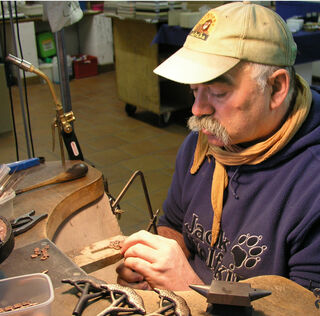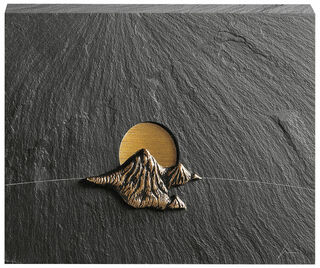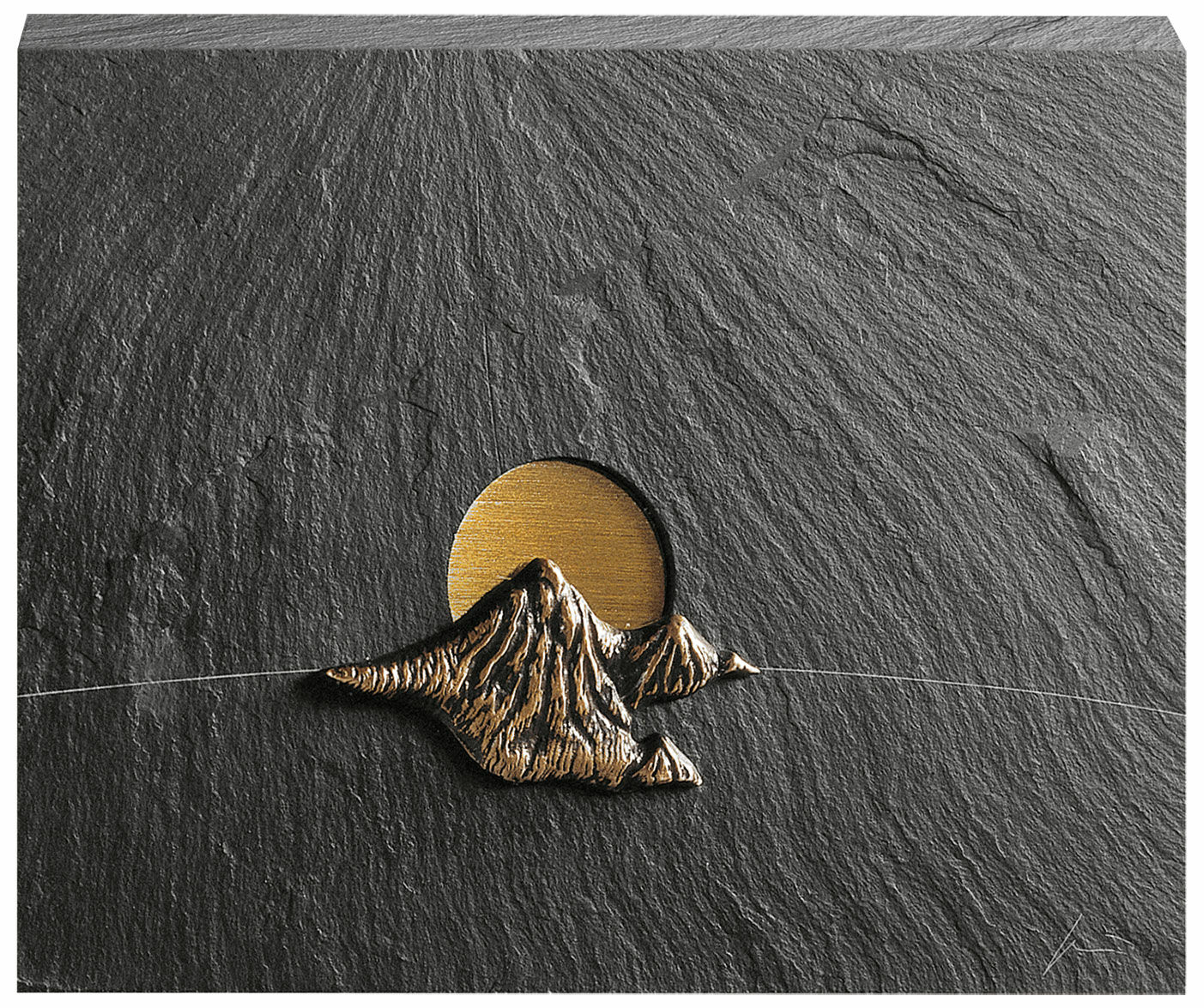Wall object "The Small Island"
Wall object "The Small Island"
Quick info
handmade | signed | slate + bronze | size 20 x 15 cm | suspension device
Detailed description
Wall object "The Small Island"
As early as 1978, the German newspaper Berliner Morgenpost wrote on the occasion of one of Klaus Börner's first exhibitions: "Klaus Börner can create magical landscapes in which sun and moons of silver and gold, white-metallic clouds, dark-bronze surfaces, plains, mountains, dripping foliage on coral-like branching trees conjure up a picture of the world that is almost magical in its depth and stillness."
Wall object in slate and bronze. Catalogue raisonné no. 340. Unique piece. Signed by the artist. Size 20 x 15 cm. With suspension device.
Customer reviews
Kunstobjekt tadellos. Sehr gute und stoßfeste Verpackung. Schnelle Lieferung. Reibungslose Abwicklung. Gerne wieder.
Super schönes Objekt! Wir verbinden dieses zwar mit einer anderen Insel, aber die Phantasie ergänzt den Rest von dem, der in der Realität fehlt! Dieses Wandobjekt hängt zusammen mit 2 anderen ( Katzen und Wölfen ) Börner-Objekten und wirkt einfach riesig; ein Blickfang für alle - nicht nur für Kunstfreunde -, die unsere Wohnung betreten! Kompliment an Klaus Börner.

About Klaus Börner
Born in 1951 in Hildesheim, Germany, the goldsmith and sculptor Klaus Börner is a loner, an individualist, and a solitary artist who does not subscribe to the current and quickly forgotten art trends but instead follows his own way, close to nature.
Börner uses mainly slate for his unmistakable objects. He combines the small rectangular slate panels with materials such as bronze, steel, brass and sapphires. They combine with the fine lines carved into the slate to create enchanting landscape impressions. The compositions consist of a few pictorial elements, such as trees or animals, allowing a lot of room for imagination.
A sculptural technique where the artwork is cut in from a stone or wooden surface and not modelled.
There are different degrees of relief depending on the degree of projection. The range includes low relief/bas-relief and high relief. The sunk relief is a common form of reliefs in Ancient Egypt, in which the depicted scenes were cut into the stone or wood surface.
Among the most famous reliefs are the works of the Florentine master Lorenzo Ghiberti. Among other artworks, he created the pair of gilded bronze doors of the Baptistery in Florence, called by Michelangelo the "Gates of Paradise".
A plastic work of sculptural art made of wood, stone, ivory, bronze or other metals.
While sculptures from wood, ivory or stone are made directly from the block of material, in bronze casting a working model is prepared at first. Usually, it is made of clay or other easily mouldable materials.
The prime time of sculpture after the Greek and Roman antiquity was the Renaissance. Impressionism gave a new impulse to the sculptural arts. Contemporary artists such as Jorg Immendorf, Andora, and Markus Lupertz also enriched sculptures with outstanding works.


